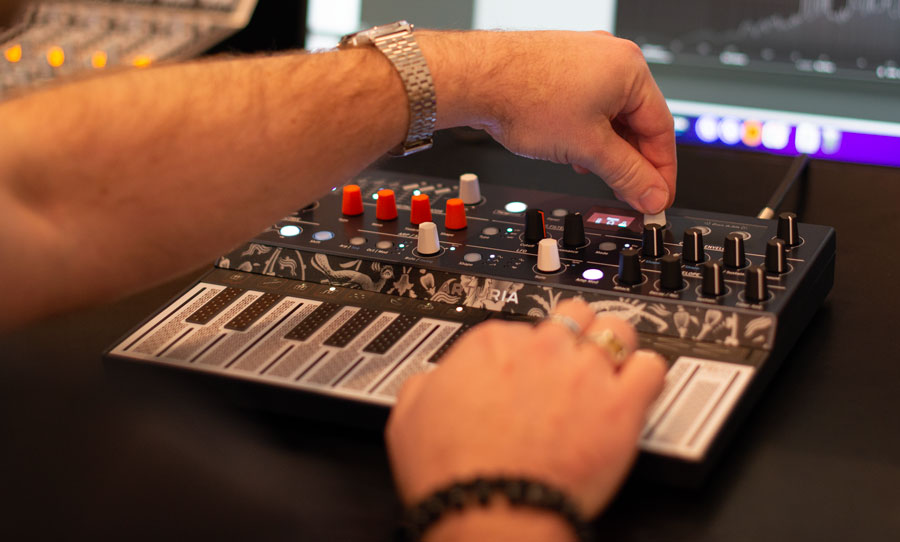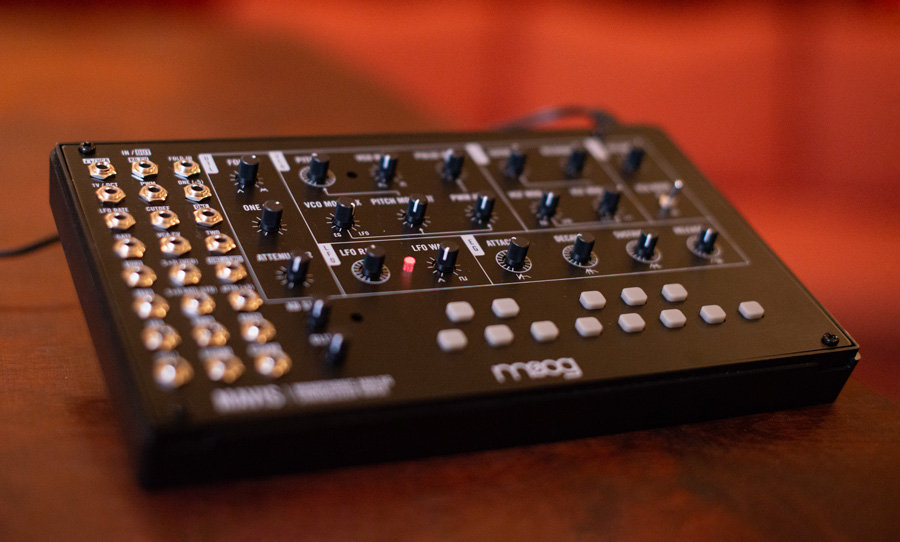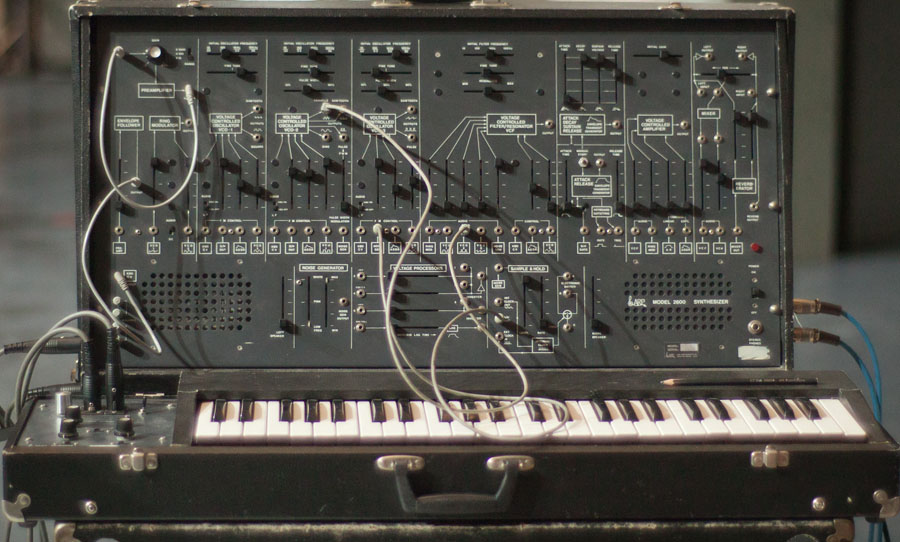In the ’70s, a new wave of synthesis made a significant impact on the audio world. There were two hot zones of innovation in this relatively new way of creating sound on either side of the Pacific.
To the west of the ocean, Robert Moog lit the wick on a revolution in the ’60s, but hit the mainstream in the following decade with the Minimoog. Rivalling him was Alan R. Pearlman with his legendary ARP instruments. On the eastern edge of the Pacific, Yamaha created its own elite polysynth, the CS-80. This set the scene for local rivals like Roland and KORG to create innovative instruments in the late ’70s and early ’80s.
In the midst of this fertile period, a new player emerged in California. Dave Smith’s Sequential Circuits was born. His first products were sequencers that augmented the abilities of Moog and ARP synths. In 1978, however, Sequential Circuits became a legend with the Prophet 5. Its use of cutting-edge technology and epic sound ushered in a new era of synthesis.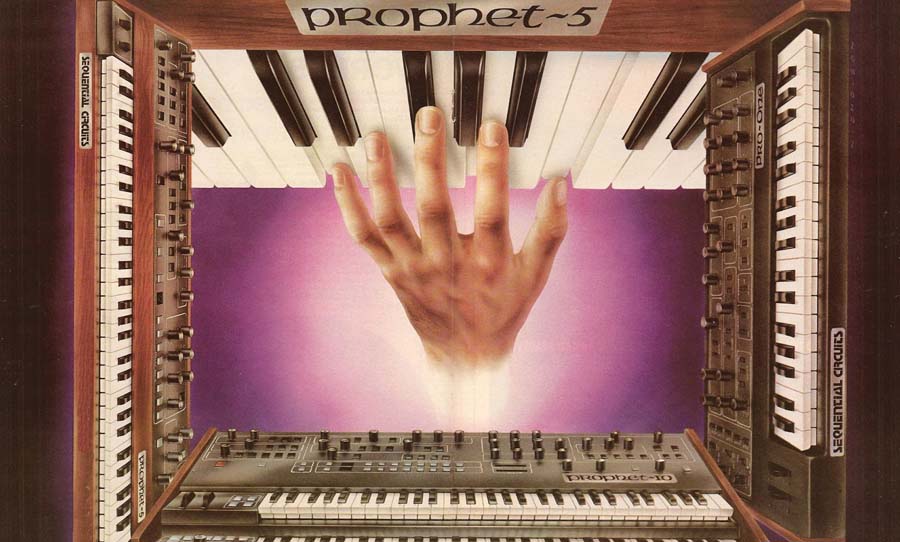
The Sequential Circuits Prophet 5 was born in 1978 and has gone on to become a legend. Its blend of cutting edge tech and analog tone brought about a new synth age.
Silicon Valley synthesis
Though the synths of the ’70s are revered for their analog warmth, it was also a period of intense development in microprocessor technology. These digital devices are the cornerstone of modern computing and it didn’t take long for musically minded technologists to take advantage.
Here in Australia, the Fairlight company used state of the art microprocessors to power its CMI sampling workstation. Extraordinarily expensive and well ahead of its time, the company flamed out too soon after it began.
Around this time, Dave Smith was also working with microprocessors at his San Francisco headquarters. Not long after his graduation from degrees in Computing Science and Electronic Engineering, he purchased his own Minimoog. His Sequential Circuits company created analog sequencers as add-ons for Moog and ARP synthesizers. His digital breakthrough came with the Model 700 Programmer, an elegant standalone unit which offered users of the Minimoog and ARP 2600 a solution for patch storage.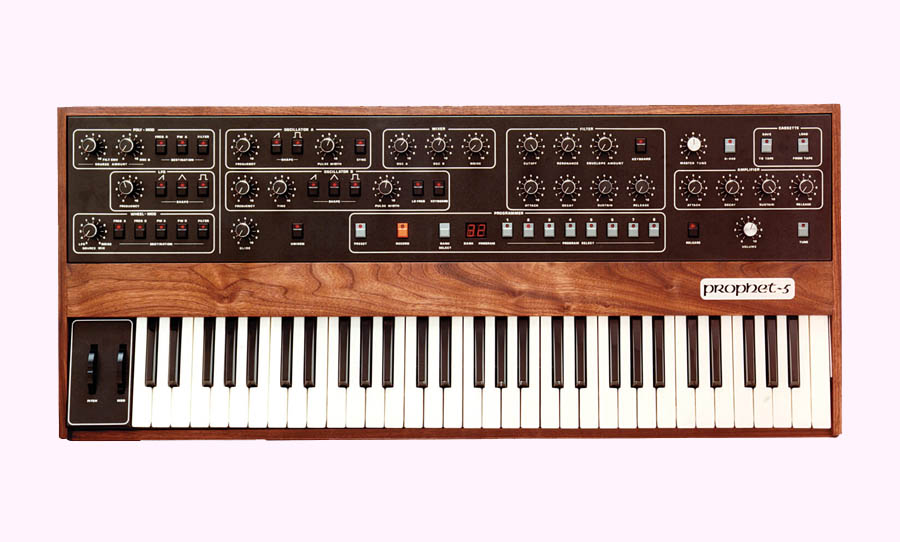
Arrival of the Prophet 5
In 1977, Smith decided to go all-in with Sequential Circuits and in the next year, launched the company’s most influential product to date: the Prophet 5. It represented the state-of-the-art in analog polysynthesis, rivalling the newly released Yamaha CS-80. The Prophet 5 had a distinct point of difference though.
Smith’s prowess in microprocessors helped him to combine the best of digital and analog worlds. With two oscillators for each of its five voices, a white noise generator, analog filters, LFO and envelope, this was an incredibly luscious polysynth – capable of producing soaring leads, thick brassy pads and thumping bass lines.
The headline feature had nothing to do with sound though. In the ’70s, patch storage was a distant dream (unless you already had one of Sequential Circuits programmers). With the Prophet-5, you could go wild with synth experiments and if you discovered gold, you could save it for later. A feature that we take for granted now, but groundbreaking at the time.
This first version of the Prophet 5 – Rev 1 – is incredibly rare these days as only 182 were made. They were all hand-assembled in these early days of the company. Despite the small numbers, it made enough of a splash to secure many preorders, which spurred Smith to secure more funding for the Rev 2, of which more than 1,000 were made.
Then came the Rev 3, the most common of all the Prophet 5s, with over 5,000 in circulation. The biggest difference in this last version of the Prophet 5 was the use of Curtis Electric Music (CEM) chips instead of the Solid State Music chips in the first two versions. It had a reputation for sounding marginally thinner than the first two versions but it was also the most reliable.
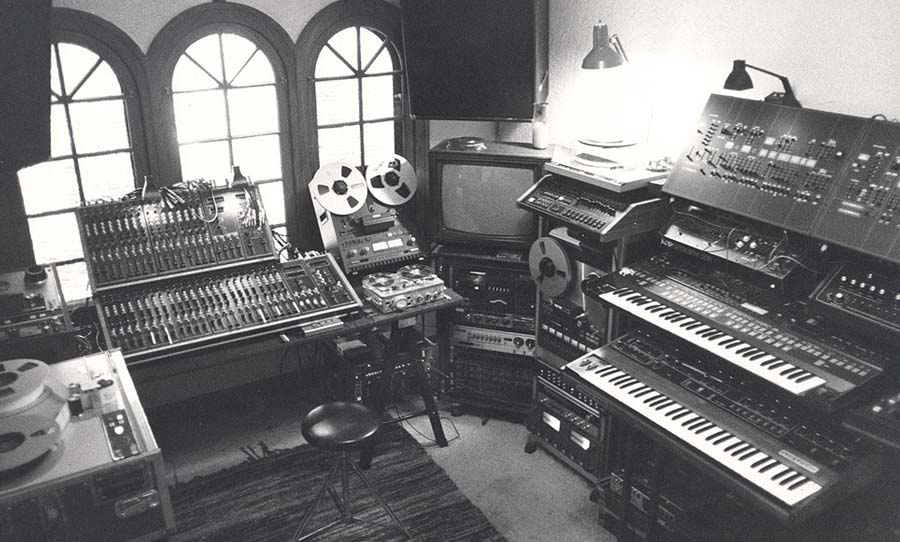
Variations
The Prophet name was applied to other synths produced by Sequential Circuits. The Pro-One was a cut-down version of the Prophet 5, but quite successful. For a monosynth, it packed a deep feature set for crafting sounds, including two oscillators that covered sawtooth, triangle and squarewave between them.
It also had intelligent and intuitive modulation capabilities. You could assign different parameters to the mod wheel and send them to different sections of the signal path – for example, assign the LFO to the mod wheel and send it directly to the filter section.
The synth also went large with the Prophet 10: essentially two Prophet 5s stacked on top of each other! While it sounds like a double-dose of a very good thing, Rev 1 of the Prophet 10 was plagued with overheating and detuning issues. Like its little brother though, by Rev 3, the Prophet 10 had switched over to CEM chips, which improved its reliability.
As it transpired, Sequential Circuits was eventually bought by one of its fiercest rivals, Yamaha, in 1987 and subsequently shut down two years later. Decades later, the Sequential Circuits brand was returned to Dave Smith and not long after, the Prophet 6 was announced, a true successor to the original. The company continues to go from strength to strength, with the recent release of the Prophet-X and Pro 3.
Whether you prefer the warmth of a classic analog Moog or the icy digital tones of the ’80s FM digital synths, the Prophet 5 sought to combine the best of both worlds – pure analog sound production with an intelligent workflow that only digital technology can provide.
